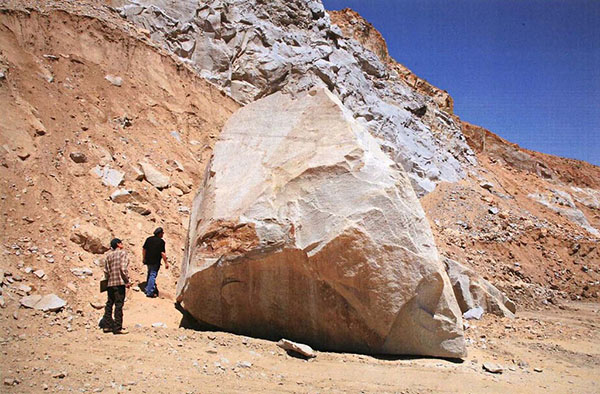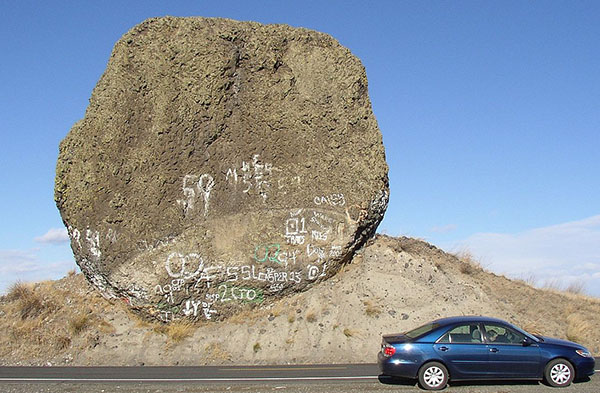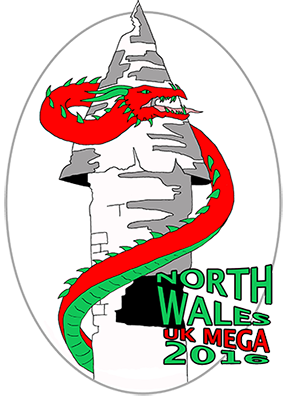General Information and Warnings
Please note, a waypoint has been provided for the start of the track which leads to this earthcache. Please do not attempt to climb up the spoil heap, this is not necessary and could be unsafe not only to yourself, but to anyone below you.
Here at Cwmorthin you will find a stunning glacial valley but geologically it can be confusing due to the vast amounts of slate mining and surface quarrying that have taken place here. The earthcaches on this trail focus on both the original glacial features of the valley, and also the interesting slate that has been exposed from underground by the workings. Always remember that the huge piles of slate you will frequently walk over and past were not placed here naturally, this is all the work of man. As you walk around, try and keep an image in your mind of how the valley would have looked before the slate was quarried.
Our earthcache trail keeps to the tracks around the old quarry and mine areas. The mines are extensive and should all be gated and locked. The mines were abandoned because they were too unsafe to work. It is not recommended to climb the spoil heaps or explore away from the paths as there could be hidden dangers, and it’s not recommended to let children or pets run off unsupervised. Also be aware that slate can have a very sharp edge and can cut very deeply, so please treat this area with the respect it requires.
Information about the Boulders and Erratics
There are many existing earthcaches studying glacial erratics and there can be downside to this that has been observed - people start to look at large boulders that are strewn about and immediately assume they are 'erratics'. The purpose of this earthcache is to introduce the concept of a boulder, and the thing that makes an 'erratic' boulder something special.
A Boulder
In geology, a boulder is a rock fragment with size greater than 25.6 centimetres (10.1 in) in diameter. Smaller pieces are called cobbles and pebbles, depending on their "grain size". While a boulder may be small enough to move or roll manually, others are extremely massive. In common usage, a boulder is too large for a person to move. Smaller boulders are usually just called rocks or stones. The word boulder is short for boulder stone, from Middle English bulderston or Swedish bullersten.

A Glacial Erratic
The first thing to note is that an 'erratic' is often still a boulder. But there is a special reason why it is 'erratic'. A glacial erratic is a boulder that differs from the size and type of rock native to the area in which it rests. "Erratics" take their name from the Latin word errare, and are carried by glacial ice, often over distances of hundreds of kilometres. Erratics can range in size from pebbles to large boulders such as Big Rock (15,000 tonnes or 17,000 short tons) in Alberta.

Geologists identify erratics by studying the rocks surrounding the position of the erratic and the composition of the erratic itself. Erratics are significant because:
- They can be transported by glaciers, and they are thereby one of a series of indicators which mark the path of prehistoric glacier movement. Their lithographic origin can be traced to the parent bedrock, allowing for confirmation of the ice flow route.
- They can be transported by ice rafting. This allows quantification of the extent of glacial flooding resulting from ice dam failure which release the waters stored in proglacial lakes such as Lake Missoula. Erratics released by ice-rafts that were stranded and subsequently melt, dropping their load, allow characterization of the high-water marks for transient floods in areas like temporary Lake Lewis.
- Erratics dropped by icebergs melting in the ocean can be used to track Antarctic and Arctic-region glacial movements for periods prior to record retention. Also known as dropstones, these can be correlated with ocean temperatures and levels to better understand and calibrate models of the global climate
Logging Requirements (Questions to Answer)
Please e-mail me the answers to the below questions via my profile. I do read all answers and try to reply to them all; I may not reply immediately so please do not wait for a reply before posting your find. Ideally, please send your answers at the same time you submit your log, or within a few days of your visit. I do check answers have been sent for every log, if you do not send answers within a week your log may be deleted. You are not expected to have any previous geological knowledge, your best attempt at the answers is all that is required.
1. Examine the boulder in front of you. Then examine the rock underneath it and around it (the natural rock, ignore any slate). Do you believe the boulder is the same type of rock as the surrounding rock?
2. Examine the boulder again. Do you see any evidence of the ice flow having been in contact with it (scuff marks for example)? Or do you see any evidence that man may have moved or dislodged this boulder during the quarry process? (E.g. does it appear to have fallen onto the tramway, or has the tramway been built around it?) From the evidence, can you tell me how you think it most likely arrived here?
3. Given your previous answers, can you see any evidence that this is an erratic, or is it simply a boulder?
We always like to see photographs of you and/or your GPS device with the geological features - plus this also provides additional proof of your visit, so please include one with your log if you wish.
This cache has been produced especially for the
